Please check our FAQs section if you unsure how to use the website or looking for something specific
This is a complete republication in book form of the magazine produced by Barry Flanagan with fellow student Alistair Jackson and lecturer Rudy Leenders whilst he was a student at St Martins School of Art. They printed a total of sixteen issues between October 1964 and June 1965. Flanagan obtained the school’s administration staff’s agreement to use the cyclostyle machine on alternate Monday’s in term time. He turned out 50 copies an issue and recalled the circular action of the machine with a characteristic smile.
Barry Flanagan gave his original copies to St Martins School of Art special collections. (Now it is CSM, University of the Arts) Judy Lindsay of the Special collections was enthusiastic about the plan to print a facsimile that would be faithful to the original ideology of fast cheap production experimental art magazine. But since Flanagan had given his copies for safe keeping and also with the intention that they would be available for research purposes it was necessary to get a license from the University of the Arts to print the book. The run is 1000 copies and its availability will give a fresh look at the collaborations between poetry, the visual arts and the ferment of ideas, between art practices, which embrace concrete poetry as sculptural form, the beat and underground scene.
Interestingly the Royal Academy shop considers the book ‘too avant garde’ to stock. Their response is remarkable as it demonstrates that for the RA, the twenty-three year old Barry Flanagan was producing work of a more radical nature than the YBA’s, showcased at the RA in the Sensation exhibition in 1997. Amongst those selected were Damian Hirst, Sarah Lucas, Tracey Emin, Mark Quinn, Jake and Dinos Chapman.
Silâns is the phonetic spelling of the French word, silence. Silence and the absence of sound as a form of sculptural presence were concerns Flanagan engaged with directly through this experimental magazine. It is difficult to define a lack of sound, or noise without a framework to contain the enquiry, for which the magazine provided a discursive space. Distinctions in the unseen are delineated in the opening issue ‘A Prelude to a sculpture that has never been seen’ and ‘A prelude to a sculpture that has never been seen before’. They follow an epigraph from Joyce Ulysses, ‘everything speaks in its own way.’
You can purchase your copy via: Amazon Or Marcus Campbell Art Books